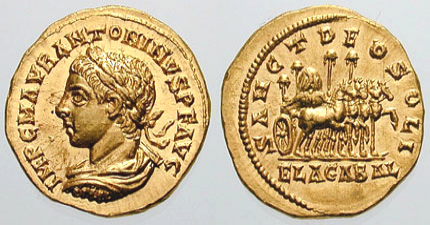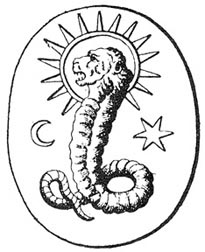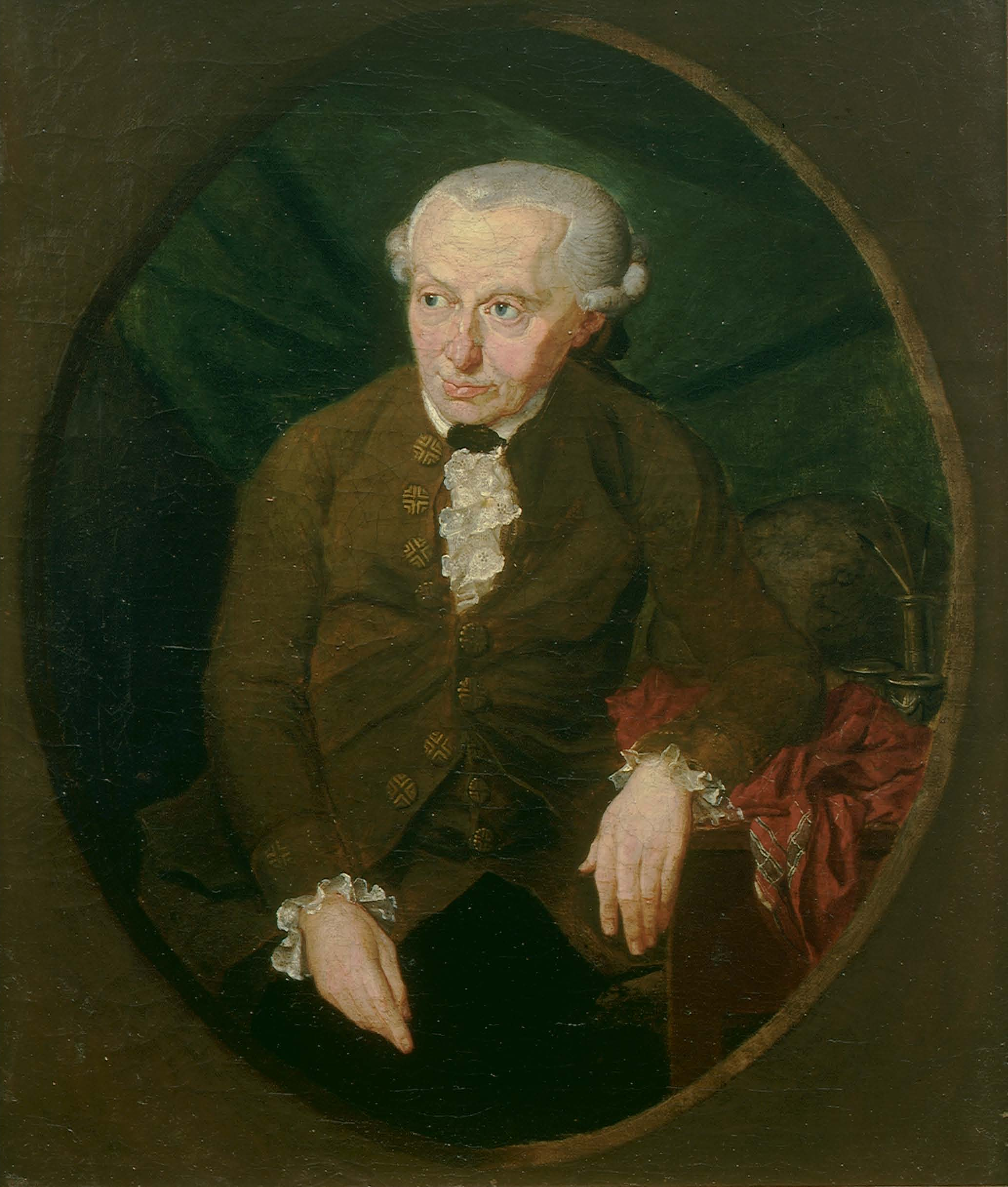|
Iamblichus
Iamblichus ( ; ; ; ) was a Neoplatonist philosopher who determined a direction later taken by Neoplatonism. Iamblichus was also the biographer of the Greek mystic, philosopher, and mathematician Pythagoras. In addition to his philosophical contributions, his is important for the study of the sophists because it preserved about ten pages of an otherwise unknown sophist known as the Anonymus Iamblichi. Life According to the and Iamblichus' biographer, Eunapius, Iamblichus was born in Chalcis (later called Qinnašrīn) in Coele, now in northwest Syria. Iamblichus was descended from the Emesene dynasty. He initially studied under Anatolius of Laodicea and later studied under Porphyry, a pupil of Plotinus (the founder of Neoplatonism). Iamblichus disagreed with Porphyry about theurgy, reportedly responding to Porphyry's criticism of the practice in '' On the Mysteries of the Egyptians, Chaldeans, and Assyrians''. He returned to Coele Syria around 304 to found a school i ... [...More Info...] [...Related Items...] OR: [Wikipedia] [Google] [Baidu] |
Emesene Dynasty
The Emesene (or Emesan) dynasty, also called the Sampsigeramids or the Sampsigerami or the House of Sampsigeramus (), were a Roman client dynasty of Syrian priest-kings known to have ruled by 46 BC from Arethusa and later from Emesa, Syria, until between 72 and 78/79, or at the latest the reign of Emperor Antoninus Pius (138–161). Iamblichus, the famous Neoplatonist philosopher of the third century, was one of their descendants, as was empress Julia Domna, matriarch of the Severan dynasty. Onomastics Most modern sources declare the family to be of Arab origin. Some members of the family such as Julius Bassianus, father of Julia Domna, are described in Roman sources as "a priest of the Sun, whom the Phoenicians, from whom he sprang, call Elagabalus". Since Emesa was well outside the traditional and geographical boundaries of Phoenicia, some modern historians consider the use of "Phoenician" in these sources a pseudo-ethnic label; one that arose from the political creation ... [...More Info...] [...Related Items...] OR: [Wikipedia] [Google] [Baidu] |
Pythagoras
Pythagoras of Samos (; BC) was an ancient Ionian Greek philosopher, polymath, and the eponymous founder of Pythagoreanism. His political and religious teachings were well known in Magna Graecia and influenced the philosophies of Plato, Aristotle, and, through them, Western philosophy. Modern scholars disagree regarding Pythagoras's education and influences, but most agree that he travelled to Croton in southern Italy around 530 BC, where he founded a school in which initiates were allegedly sworn to secrecy and lived a communal, ascetic lifestyle. In antiquity, Pythagoras was credited with mathematical and scientific discoveries, such as the Pythagorean theorem, Pythagorean tuning, the five regular solids, the theory of proportions, the sphericity of the Earth, the identity of the morning and evening stars as the planet Venus, and the division of the globe into five climatic zones. He was reputedly the first man to call himself a philosopher ("lover of wi ... [...More Info...] [...Related Items...] OR: [Wikipedia] [Google] [Baidu] |
On The Mysteries Of The Egyptians, Chaldeans, And Assyrians
''On the Mysteries of the Egyptians, Chaldeans, and Assyrians'' (), also known as the ''Theurgia'' and under its abbreviated Latin title ''De Mysteriis Aegyptiorum'' (''On'' ''the Egyptian Mysteries''; or often simply ''De Mysteriis''), is a work of Neoplatonic philosophy primarily concerned with ritual and theurgy and attributed to Iamblichus. Porphyry is known to have had a disagreement with Iamblichus over the practice of theurgy, and the ''Mysteries'' consists mainly of Iamblichus' responses to the criticisms of his teacher. Authorship Proclus, writing 100 years after Iamblichus, seems to have ascribed to him the authorship of the ''Mysteries''. However, the differences between this book and Iamblichus' other works in style and in some points of doctrine have led some to question whether Iamblichus was the actual author. Still, the treatise certainly originated from his school, and in its systematic attempt to give a speculative justification of the polytheistic cult practi ... [...More Info...] [...Related Items...] OR: [Wikipedia] [Google] [Baidu] |
Theurgy
Theurgy (; from the Greek θεουργία ), also known as divine magic, is one of two major branches of the magical arts, Pierre A. Riffard, ''Dictionnaire de l'ésotérisme'', Paris: Payot, 1983, 340. the other being practical magic or thaumaturgy. Theurgy describes the ritual practices associated with the invocation or evocation of the presence of one or more deities, especially with the goal of achieving henosis (uniting with the divine) and perfecting oneself. Definitions *Proclus (): theurgy is "a power higher than all human wisdom embracing the blessings of divination, the purifying powers of initiation and in a word all the operations of divine possession." * Keith Thomas: "Spiritual magic or theurgy was based on the idea that one could reach God in an ascent up the scale of creation made possible by a rigorous course of prayer, fasting and devotional preparation." * Pierre A. Riffard: "Theurgy is a type of magic. It consists of a set of magical practices perform ... [...More Info...] [...Related Items...] OR: [Wikipedia] [Google] [Baidu] |
Neoplatonism
Neoplatonism is a version of Platonic philosophy that emerged in the 3rd century AD against the background of Hellenistic philosophy and religion. The term does not encapsulate a set of ideas as much as a series of thinkers. Among the common ideas it maintains is monism, the doctrine that all of reality can be derived from a single principle, "the One". Neoplatonism began with Ammonius Saccas and his student Plotinus (c. 204/5 – 271 AD) and stretched to the sixth century. After Plotinus there were three distinct periods in the history of neoplatonism: the work of his student Porphyry (third to early fourth century); that of Iamblichus (third to fourth century); and the period in the fifth and sixth centuries, when the academies in Alexandria and Athens flourished. Neoplatonism had an enduring influence on the subsequent history of Western philosophy and religion. In the Middle Ages, Neoplatonic ideas were studied and discussed by Christian, Jewish, and Muslim thinkers. ... [...More Info...] [...Related Items...] OR: [Wikipedia] [Google] [Baidu] |
Porphyry (philosopher)
Porphyry (; ; – ) was a Neoplatonic philosopher born in Tyre, Roman Phoenicia during Roman rule. He edited and published the '' Enneads'', the only collection of the work of Plotinus, his teacher. He wrote original works in the Greek language on a wide variety of topics, ranging from music theory to Homer to vegetarianism. His '' Isagoge'' or ''Introduction'', an introduction to logic and philosophy, was the standard textbook on logic throughout the Middle Ages in its Latin and Arabic translations. Porphyry was, and still is, also well-known for his anti-Christian polemics. Through works such as ''Philosophy from Oracles'' and '' Against the Christians'' (which was banned by Constantine the Great), he was involved in a controversy with early Christians. Life The ''Suda'' (a 10th-century Byzantine encyclopedia based on many sources now lost) reports that Porphyry was born in Tyre, however, other sources report that he was born in Batanaea, present-day Syria . His par ... [...More Info...] [...Related Items...] OR: [Wikipedia] [Google] [Baidu] |
Demiurge
In the Platonic, Neopythagorean, Middle Platonic, and Neoplatonic schools of philosophy, the Demiurge () is an artisan-like figure responsible for fashioning and maintaining the physical universe. Various sects of Gnostics adopted the term ''demiurge''. Although a fashioner, the demiurge is not necessarily the same as the creator figure in the monotheistic sense, because the demiurge itself and the material from which the demiurge fashions the universe are both considered consequences of something else. Depending on the system, they may be considered either uncreated and eternal or the product of some other entity. Some of these systems are monotheistic, while others are henotheistic or polytheistic. The word ''demiurge'' is an English word derived from ''demiurgus'', a Latinised form of the Greek or . It was originally a common noun meaning "craftsman" or "artisan", but gradually came to mean "producer", and eventually "creator." The philosophical usage and the proper nou ... [...More Info...] [...Related Items...] OR: [Wikipedia] [Google] [Baidu] |
Anatolius Of Laodicea
Anatolius of Laodicea (; early 3rd century – July 3, 283"Lives of the Saints," Omer Englebert New York: Barnes & Noble Books, 1994, p. 256.), also known as Anatolius of Alexandria, was a Syro- Egyptian saint and Bishop of Laodicea on the Mediterranean coast of Roman Syria in AD 268. He was not only one of the foremost scholars of his day in the physical sciences, as well as in Aristotelian and Platonic philosophies, but also a renowned computist and teacher of the Neoplatonic philosopher Iamblichus. Anatolius is recognised as a saint by the Roman Catholic Church. His feast day, like Saint Anatolius of Constantinople, is celebrated on 3 July. Life Anatolius was born and raised in Alexandria, Egypt, during the early 3rd century. Prior to becoming one of the great lights of the Church, Anatolius enjoyed considerable prestige at Alexandria while working as a senator. According to Eusebius of Caesarea, he was credited with a rich knowledge of arithmetic, geometry, physics ... [...More Info...] [...Related Items...] OR: [Wikipedia] [Google] [Baidu] |
Ancient Roman Philosophy
Ancient Roman philosophy is philosophy as it was practiced in the Roman Republic and its successor state, the Roman Empire. Roman philosophy includes not only philosophy written in Latin, but also philosophy written in Greek in the late Republic and Roman Empire. Important early Latin-language writers include Lucretius, Cicero, and Seneca the Younger. Greek was a popular language for writing about philosophy, so much so that the Roman Emperor Marcus Aurelius chose to write his ''Meditations'' in Greek. History Interest in philosophy was first shown at Rome in 155 BC, by an Athenian embassy consisting of the Academic skeptic Carneades, the Stoic Diogenes of Babylon, and the Peripatetic Critolaus. Roman philosophy was heavily influenced by Hellenistic philosophy; however, unique developments in philosophical schools of thought occurred during the Roman period as well, with many philosophers adapting teachings from more than one school. Both leading schools of law of the Roman p ... [...More Info...] [...Related Items...] OR: [Wikipedia] [Google] [Baidu] |
Plotinus
Plotinus (; , ''Plōtînos''; – 270 CE) was a Greek Platonist philosopher, born and raised in Roman Egypt. Plotinus is regarded by modern scholarship as the founder of Neoplatonism. His teacher was the self-taught philosopher Ammonius Saccas, who belonged to the Platonic tradition. Historians of the 19th century invented the term "neoplatonism" and applied it to refer to Plotinus and his philosophy, which was vastly influential during late antiquity, the Middle Ages, and the Renaissance. Much of the biographical information about Plotinus comes from Porphyry's preface to his edition of Plotinus' most notable literary work, '' The Enneads''. In his metaphysical writings, Plotinus described three fundamental principles: the One, the Intellect, and the Soul. His works have inspired centuries of pagan, Jewish, Christian, Gnostic, and early Islamic metaphysicians and mystics, including developing precepts that influence mainstream theological concepts within religion ... [...More Info...] [...Related Items...] OR: [Wikipedia] [Google] [Baidu] |
Monad (philosophy)
The term ''monad'' () is used in some cosmic philosophy and cosmogony to refer to a most basic or original substance. As originally conceived by the Pythagoreans, the Monad is therefore Supreme Being, divinity, or the totality of all things. According to some philosophers of the early modern period, most notably Gottfried Wilhelm Leibniz, there are infinite monads, which are the basic and immense forces, elementary particles, or simplest units, that make up the universe. Historical background According to Hippolytus, the worldview was inspired by the Pythagoreans, who called the first thing that came into existence the "monad", which begat (bore) the dyad (from the Greek word for two), which begat the numbers, which begat the point, begetting lines or finiteness, etc. It meant divinity, the first being, or the totality of all beings, referring in cosmogony (creation theories) variously to source acting alone and/or an indivisible origin and equivalent comparators. Py ... [...More Info...] [...Related Items...] OR: [Wikipedia] [Google] [Baidu] |
Metaphysics
Metaphysics is the branch of philosophy that examines the basic structure of reality. It is traditionally seen as the study of mind-independent features of the world, but some theorists view it as an inquiry into the conceptual framework of human understanding. Some philosophers, including Aristotle, designate metaphysics as first philosophy to suggest that it is more fundamental than other forms of philosophical inquiry. Metaphysics encompasses a wide range of general and abstract topics. It investigates the nature of existence, the features all entities have in common, and their division into categories of being. An influential division is between particulars and universals. Particulars are individual unique entities, like a specific apple. Universals are general features that different particulars have in common, like the color . Modal metaphysics examines what it means for something to be possible or necessary. Metaphysicians also explore the concepts of space, time, ... [...More Info...] [...Related Items...] OR: [Wikipedia] [Google] [Baidu] |




